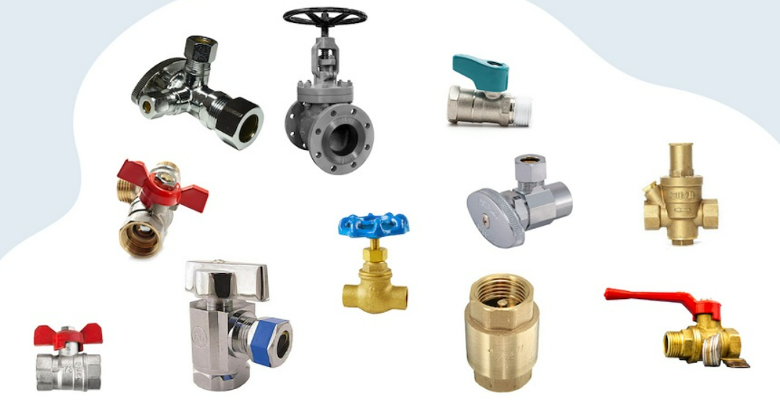Competency F3: Install Plumbing Fixtures and Appliances
Learning Task 2
Describe the servicing of fixtures, trim, and appliances
Servicing a plumbing fixture typically involves inspecting, repairing, cleaning, or replacing components to the fixture’s proper functioning. It is important to get as much information from the client and then perform a thorough analysis.
Interpret Client Information
Each customer’s complaint is unique, and it’s important to approach them with an open mind, patience, and a desire to resolve the issue. Effective interpretation of customer complaints can lead to better problem-solving, improved customer relationships, and opportunities for business growth. Not to mention less call backs.
Interpreting a customer’s complaint involves understanding the underlying issue or concern they are expressing. Give your full attention to the customer and actively listen to their complaint. Let them express their concerns without interruption.
Determine the primary problem or dissatisfaction the customer is expressing and if the customer’s complaint is unclear or vague, politely ask for further details or examples to better understand the situation. Clarifying questions can help fill in any gaps and provide a clearer picture of the problem. Asking the customer to show you the problem and recreate it can be helpful for the upcoming troubleshooting.
Consult relevant company policies, procedures, or product specifications to determine if the customer’s complaint aligns with established guidelines. Make sure to document any deviations from the proper installation procedures since that may affect the warranty.
Provide a solution or propose steps to resolve the issue. Offer alternatives, such as a replacement, repair, refund, or other appropriate actions, depending on the nature of the complaint and your company’s policies. Many companies will not work on older hot water tanks, faucets, or other appliances, therefore you must inform the customer or your company’s policies.
Once you have covered all those bases, proceed as necessary. Arrange for a time to resolve the issue or complete the fix immediately. Consider time for ordering and gathering parts, tools, and equipment before proceeding.
Inspection
Repairs and alterations are expected to be completed in accordance with local codes and inspected by a local authority. Inspectors are required for both plumbing and gas installations. Along with compliance to code, inspectors will check for things such as checking the proper permitting was established, the fixture or appliance has been properly tested, and investigating any incidents, accidents, and safety violations.
Tools and Equipment
Before starting the servicing process, gather the required tools and materials based on the specific fixture you’ll be working on. This may include wrenches, screwdrivers, pliers, replacement parts, sealants, lubricants, and cleaning supplies. Remember that you will need to test the fixture or appliance, so you may need a compressor and products for a leak test. Always have a knife for cutting silicone and caulking. Consider your PPE before starting the service. Have gloves, and safety glasses, and anything task specific to your work.
System Check/Test
Before disassembling a fixture or appliance, perform a test. Run the faucet, call for heat, and try to recreate the issue. If you can identify problems before taking the component apart, it will help with safer, faster repair. After a safe shut down, carefully disassemble the fixture to access the internal components that need attention. This may involve removing screws, nuts, or other fasteners that hold the fixture together. Refer to the manufacturer’s instructions or plumbing diagrams if necessary. Once you have access, check for damage. Clean all working parts and replace all broken parts. Refer to the manufacturer’s instructions for guidance on repairs and expected outcomes when doing a system check.
Manufacturers’ Specifications
Most manufacturers provide detailed specifications in the product manuals or documentation that accompany the product. These documents outline the technical details, features, performance parameters, and operating instructions specific to the product. Product manuals are often available in print form or as downloadable PDF files from the manufacturer’s website.
The official website of the manufacturer is a common source for accessing product specifications. Manufacturers often provide comprehensive product information, including detailed specifications, on their websites. Look for a dedicated product page or a section that provides specifications and technical details for the specific product you are interested in.
If the product is available for purchase through online retailers or distributors, they often include manufacturers’ specifications on the product listing page. These specifications may be extracted from the official product documentation or provided directly by the manufacturer.
Some industries maintain databases or resources that compile manufacturers’ specifications for various products. These databases can be accessed online or through industry-specific publications or directories. Examples include technical databases for electronic components, automotive specifications, industrial equipment specifications, etc.
Manufacturers often showcase their products at trade shows, exhibitions, or industry conferences. Attending these events allows you to interact directly with the manufacturers and obtain detailed specifications for their products. You may receive brochures, data sheets, or product catalogs that contain comprehensive specifications.
If you cannot find the desired specifications through the above channels, reaching out to the manufacturer directly is an option. Manufacturers typically have customer support channels, such as phone or email, where you can inquire about product specifications. They can provide you with the necessary documentation or direct you to the appropriate resource.
Remember to have the specific product model or part number available when searching for manufacturers’ specifications, as this information is crucial for accurate results.
Isolation
Locate the shut-off valves that control the water supply to the fixture you’ll be servicing. Turn off the water supply by closing the valves clockwise. If there are no individual shut-off valves, you may need to shut off the main water supply to the building.

Always know where the main shut offs (Figure 3) are for any service. Any isolation that requires shutting services off to units other than the one requiring work will need to be prearranged with a building manager or the other affected occupants. Shutting off gas may require isolating the appliance at the meter and may need to be arranged with the city. Do not isolate fixtures or appliances if you haven’t checked what other fixtures, appliances, or houses will be affected.
Clean/Repair/Replace
Clear any debris or sediment buildup using appropriate cleaning tools or chemicals. For example, you might use a wire brush or pipe cleaner to remove scale or grime. Ensure the components are thoroughly cleaned before proceeding.
If any parts are damaged or malfunctioning, repair or replace them as needed. This could involve replacing washers, O-rings, gaskets, valves, cartridges, or other specific components based on the fixture type. Follow manufacturer guidelines and use compatible replacement parts.
Once the necessary repairs or replacements have been made, reassemble the fixture in the reverse order of disassembly. Ensure all connections are tight but avoid over-tightening, as it can cause damage or leaks.
Adjustments
If you notice any leaks or issues during testing, make the necessary adjustments. Tighten connections, reapply sealants, or troubleshoot further to resolve any problems. You must be able to guarantee that the fixture is operating smoothly and without any leaks before signing off.
Return to Service
Clean up any residual water, debris, or tools from the work area. Once you’re confident that the fixture is functioning properly and you have made any necessary adjustments, restore the water supply by opening the shut-off valves. After opening the shut-offs, monitor the fixture and confirm that there are no hidden leaks or issues.
Verify Operation
Turn on the water or gas and carefully and inspect for any leaks around the fixture or connections. Check for proper water flow and functionality by operating the fixture’s handles, knobs, or switches. Test both hot and cold water settings, as well as any other features specific to the fixture. Use soapy water or a leak detector on all gas connections. Run the fixture or appliance. Allow fixtures to run for a good amount of time and inspect all the attached piping to confirm that it is water or gas tight. Do not rush through the testing part of a service call. When you leave the site, you should be confident the fixture or appliance was operating as per the manufacturer’s instructions and complies with the local codes.
Documentation
Documenting a service call is important for record-keeping, communication, and future reference. Here are some key points that can be documented for a service call:
- Note the date and time of the service call establishing a timeline for the work performed and provides a reference point for any subsequent actions or discussions.
- Accurately record the customer’s name, address, contact number, and any other relevant contact details to keep an accurate service history.
- Document the reason for the service call as explained by the customer. Include details of the plumbing issue, such as the type of fixture involved (sink, toilet, shower, etc.), specific symptoms or problems reported, and any additional information provided by the customer.
- Describe the initial assessment of the issue. Note any observations, tests performed, or diagnostic steps taken to identify the cause of the issue. Document the initial findings and any relevant measurements or readings taken during the assessment.
- Provide a detailed account of the work performed during the service call. Describe the repairs, replacements, adjustments, or maintenance tasks carried out to address the plumbing issue. Include specific details of the parts used, tools employed, and techniques applied. If multiple tasks were performed, break them down into separate sections for clarity.
- List the materials, parts, or consumables used during the service call. Include the specific names, sizes, quantities, and any relevant part numbers. This information is essential for tracking inventory, estimating costs, and ensuring accurate documentation.
- Document any challenges, complications, or unexpected issues encountered during the service call. Describe how these challenges were addressed or resolved, and note any additional steps taken to overcome them. This information can be helpful for future reference or if follow-up actions are required.
- Provide recommendations or suggestions to the customer regarding future maintenance, upgrades, or potential issues that may arise. Include any advice that was offered to guarantee the customer’s plumbing system operates optimally and to help prevent future problems.
- Record any significant communication or discussions with the customer during the service call. Note any agreements made, changes in scope, or additional instructions provided. This helps maintain clear documentation of customer interactions and ensures effective communication between the plumber and the customer.
- Summarize the final assessment of the plumbing system after the work was completed. Note any improvements, repairs completed, or issues resolved. Confirm that the plumbing fixture is functioning properly and that any reported symptoms or problems have been addressed.
- When required, obtain the customer’s signature or approval on the documented service call. This confirms that the customer is satisfied with the work performed and serves as a record of their agreement.
- Document any recommended follow-up actions, such as future inspections, scheduled maintenance, or additional repairs that may be required. This ensures that all necessary steps are recorded and can be addressed in a timely manner.
The thorough documentation of a service call, creates a comprehensive record of the work performed, maintains accurate information for future reference, and provides a clear communication channel between the service provider and the customer. Many service technicians understand that clear and honest communication with a customer can be the difference between generating and losing business.
 Now complete Self-Test 2 and check your answers.
Now complete Self-Test 2 and check your answers.
Self-Test 2
Self-Test 2
Media Attributions
- Figure 3. “Shut off valves” from All House Related Solutions is used for educational purposes under the basis of fair dealing.

